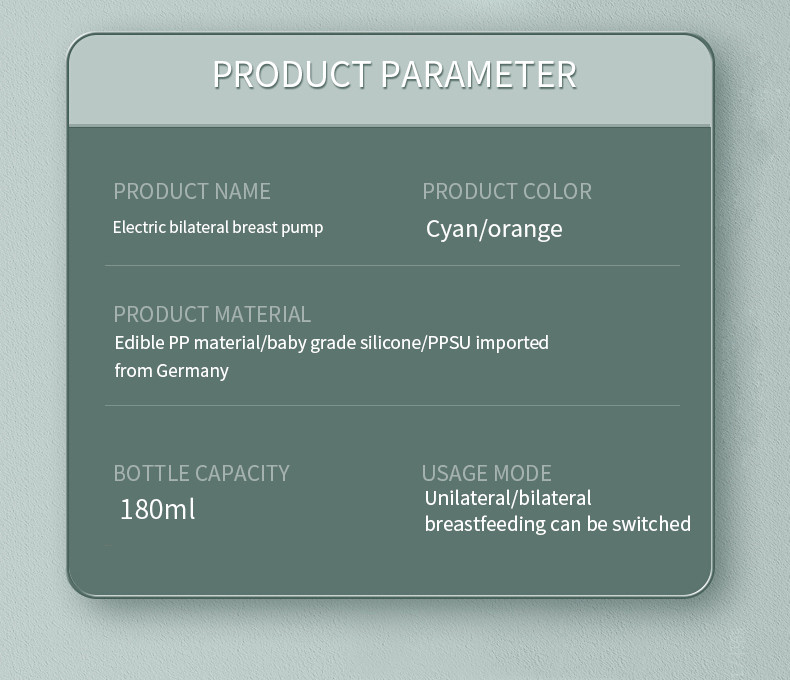Moms are truly incredible: Nine months of pregnancy, labor, delivery, and now breastfeeding. It is a beautiful journey, but it’s not always the easiest. Some moms may experience problems with having a low milk supply, which is frustrating, especially for a mom whose goal is to breastfeed exclusively.
There are many tips and suggestions you can try when working to increase your supply, but when it comes down to it, most revolve around the concept of removing more milk. Removing milk from the breasts signals to the body that more milk needs to be produced for your baby. One strategy your lactation consultant may suggest for boosting your milk supply is power pumping. Charging Auto Breast Pump

Power pumping, also called cluster pumping, is a technique where moms pump more frequently to remove milk from their breasts.1 This increased frequency mimics a baby’s tendency to cluster feed. The idea behind power pumping is that as the mother frequently removes milk from the breast, her body identifies that it needs to produce more milk to keep up with the baby’s needs. This does not replace a feed for your breastfeeding baby or regular pumping sessions throughout the day for exclusively pumping moms. Baby should still be brought to the breast frequently throughout the day to feed, and pumping sessions should continue as normal.
When preparing to power pump, the first step is essential. This step is to make sure you have a low milk supply. Consult your lactation specialist to determine if this technique is right for you. Power pumping when your milk supply is not low could lead to an oversupply. That can cause a handful of problems, such as engorgement or even making breastfeeding more difficult for your baby. Working with a lactation consultant is also helpful to troubleshoot other issues that could be leading to low milk supply, such as assessing your baby’s latch to make sure they can remove milk from the breast easily.1
The next step is to ensure you have a double electric breast pump and correct fitting flanges to pump with. Bringing your baby to the breast is always the preferred method of removing milk, but for the sake of power pumping or for those whose little ones cannot breastfeed, electric breast pumps are an excellent tool to express milk.
Correct-fitting flanges also play a role in helping remove milk from the breasts. An appropriate fitting flange should allow your nipple to move in and out without rubbing. If a flange is too big or too small, you will run into problems. When a flange is too small, it could cause issues with expressing milk and cause pain and abrasions to the nipple. Most electric pumps have different flange size options to see what is best for you. If you are unsure, speak with a lactation consultant to get assistance in finding the correct size.1
When it comes time to power pump, ensure your spouse or support family member or friend is available to care for your little one. I know it is challenging to be away from your baby, but you will need to have both hands available during this dedicated pumping session.
Now it’s time to pump! First, find a comfortable location to be as relaxed as possible and begin to pump.2 Turn on your favorite music or calming background sounds to create a serene environment. A relaxed atmosphere can help with your milk letdown.
Regarding a pumping “schedule,” there are different recommendations. The most recommended power pumping schedule revolves around an hour. During this hour, a sample schedule might look like:3
Power pumping does not usually yield instant gratification; it will take time. You should power pump for about three to five consecutive days and do 1-3 sessions daily. Some may also consider a schedule that involves pumping extra throughout the day. Make sure to speak with your lactation consultant to create a plan that will work best for you.3
Some helpful tips to keep in mind when power pumping:
Breast milk production is primarily a supply-and-demand system. Ideally, more milk that is expressed leads to producing more breast milk. By power pumping, you repeatedly empty your breasts, signaling to your body that more milk needs to be produced for your baby. This allows the process of milk synthesis to increase. And if milk is not being removed regularly from the breast, milk synthesis slows. Power pumping once will not immediately increase your supply; it will take time, so be patient, mama. You are working hard, and hopefully, soon, you will see your hard work pay off.1
Having a low milk supply can cause more stress during the postpartum period. Power pumping may be a helpful technique for moms to increase their supply for their little ones. It is always best practice to speak with a lactation consultation and your healthcare team to address concerns and create a plan to help increase your breast milk supply. And remember, mama, you’re doing fantastic!
For licensing questions around our content and award badges, please reach out to Adcetera at babychick@adcetera.com. Please note that Adcetera is the only authorized company we’ve partnered with for these licensing requests.
Baby Chick provides general information for educational purposes only. The information on this site is not medical advice, diagnosis, or treatment. Your use of the site indicates your agreement to be bound by our Terms of Use.
© 2015-2023 BABY CHICK, LLC. ALL RIGHTS RESERVED.
Sign up to receive our weekly updates to educate and inspire you on your parenting journey. We will keep you up-to-date with the latest trends and topics from pregnancy to motherhood!

Manual Breast Pump for Mom Don’t you want to stay up to date on pregnancy and parenting information, new products, and all other things motherhood? Of course you do!